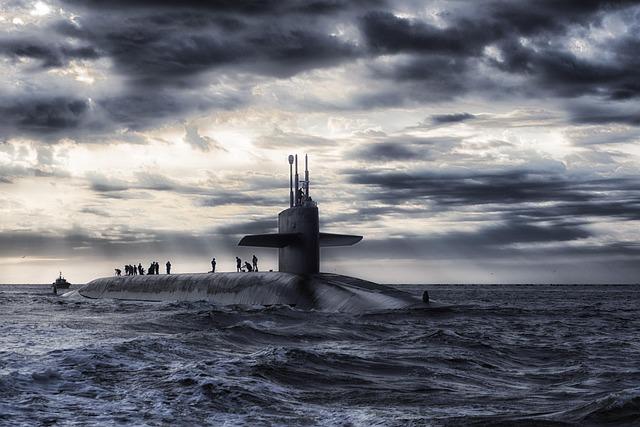As geopolitical dynamics shift across the Indo-Pacific, India is intensifying efforts to assert its influence as a dominant maritime power. The recent analysis featured on orfonline.org, titled “Crafting India’s Maritime Grand Strategy: Naval Priorities for the 21st Century,” offers an in-depth examination of how New Delhi is recalibrating its naval doctrine to meet emerging security challenges. Highlighting strategic priorities ranging from naval modernization to regional partnerships, the piece underscores India’s drive to secure its maritime interests amid an increasingly contested and complex seascape.
India’s Strategic Focus on Enhancing Blue Water Naval Capabilities
India’s maritime doctrine increasingly underscores the imperative of projecting power beyond its immediate littoral waters, aligning with its aspirations as a net security provider in the Indo-Pacific region. The ongoing modernization drive centers on bolstering blue water capabilities through the induction of advanced platforms such as aircraft carriers, nuclear-powered submarines, and state-of-the-art destroyers. This strategic shift is complemented by concerted efforts to enhance indigenous shipbuilding capacities, ensuring the navy remains not only technologically superior but also self-reliant in the face of evolving regional threats.
Key components of this expansion include:
- Enhanced Overseas Presence: Establishing logistics hubs and extending naval footprints in the Indian Ocean and beyond.
- Integrated Network-Centric Warfare: Leveraging cutting-edge communication systems for seamless operational coordination.
- Force Multiplication through Multilateral Exercises: Strengthening strategic partnerships with allied navies to safeguard shared maritime interests.
| Capability | Current Status | Future Outlook |
|---|---|---|
| Aircraft Carriers | 2 operational | 3 under construction/upgrade |
| Nuclear Submarines | 1 operational | 2 planned |
| Destroyers & Frigates | 15 active vessels | 8 new additions in next 5 years |
Securing Critical Sea Lanes and Expanding Regional Maritime Influence
Ensuring uninterrupted access to critical sea lanes remains a cornerstone of India’s naval strategy, reflecting the nation’s commitment to safeguarding its economic lifelines and regional stability. With over 80% of India’s trade transiting through the Indian Ocean, the navy prioritizes persistent maritime domain awareness and presence across chokepoints such as the Strait of Malacca, the Bab-el-Mandeb, and the Hormuz Strait. Collaborations with friendly navies, enhanced surveillance systems, and forward-deployed assets form the backbone of this vigilance. Anti-piracy operations, joint exercises, and coordinated patrols amplify India’s ability to counter asymmetric threats, while ensuring that commercial shipping lanes remain free from disruption.
In parallel, India is actively expanding its maritime influence through strategic partnerships and capacity-building initiatives across the Indian Ocean Region (IOR). This outreach is designed to create a network of cooperative security frameworks, foster economic ties, and promote stability in geostrategic hotspots. The establishment of agreements enabling access to overseas naval facilities, coupled with increased participation in regional multilateral forums, illustrates a clear intent to not only project naval power but also nurture indigenous maritime capabilities. Key partner countries are being engaged with technology transfers, training programs, and infrastructure support to elevate collective resilience against emerging challenges.
| Strategic Focus | Key Actions | Regional Partners |
|---|---|---|
| Maritime Domain Awareness | Satellite surveillance, coastal radars, patrols | Maldives, Sri Lanka, Seychelles |
| Secure Sea Lanes | Chokepoint monitoring, anti-piracy ops | UAE, Oman, Djibouti |
| Capacity Building | Training, infrastructure, technology transfer | Mauritius, Madagascar, Bangladesh |
Recommendations for Integrating Technology and Multilateral Partnerships
In an era where maritime dominance hinges on rapid technological advancements, embracing cutting-edge innovations must be a cornerstone of India’s naval strategy. Prioritizing the integration of artificial intelligence, autonomous systems, and cyber-defense capabilities will enhance situational awareness and operational efficiency. Moreover, fostering robust partnerships with technology leaders and allied nations will accelerate knowledge transfer and streamline the adoption of next-generation platforms. Collaborative R&D initiatives, supported by joint naval exercises and shared intelligence frameworks, will ensure Indian naval forces remain agile against evolving threats and capitalize on emerging opportunities.
Strengthening multilateral alliances plays an equally critical role in safeguarding the Indo-Pacific’s stability. India should leverage international frameworks such as the Quad and BIMSTEC by promoting interoperability and coordinated maritime security operations. Establishing joint technology forums can facilitate real-time data sharing and standardize communication protocols across partner navies. The following table highlights key areas for collaboration, emphasizing mutual benefit and strategic synergy:
| Collaboration Domain | Primary Objective | Expected Outcome |
|---|---|---|
| Cybersecurity Intelligence | Threat Detection & Mitigation | Enhanced Collective Defense |
| Autonomous Maritime Systems | Shared R&D Platforms | Accelerated Innovation |
| Joint Naval Exercises | Interoperability & Training | Operational Cohesion |
| Information Sharing Network | Real-time Situational Awareness | Proactive Response Capability |
In Conclusion
As India navigates the complexities of the 21st-century maritime landscape, crafting a coherent and forward-looking naval strategy remains pivotal to securing its national interests and regional influence. The insights presented underscore the imperative for India to balance modernization, strategic partnerships, and resource allocation to address emerging challenges in the Indo-Pacific. As the global order continues to evolve, India’s maritime priorities will not only shape its naval capabilities but also define its role as a key player in maintaining security and stability across critical sea lanes.




